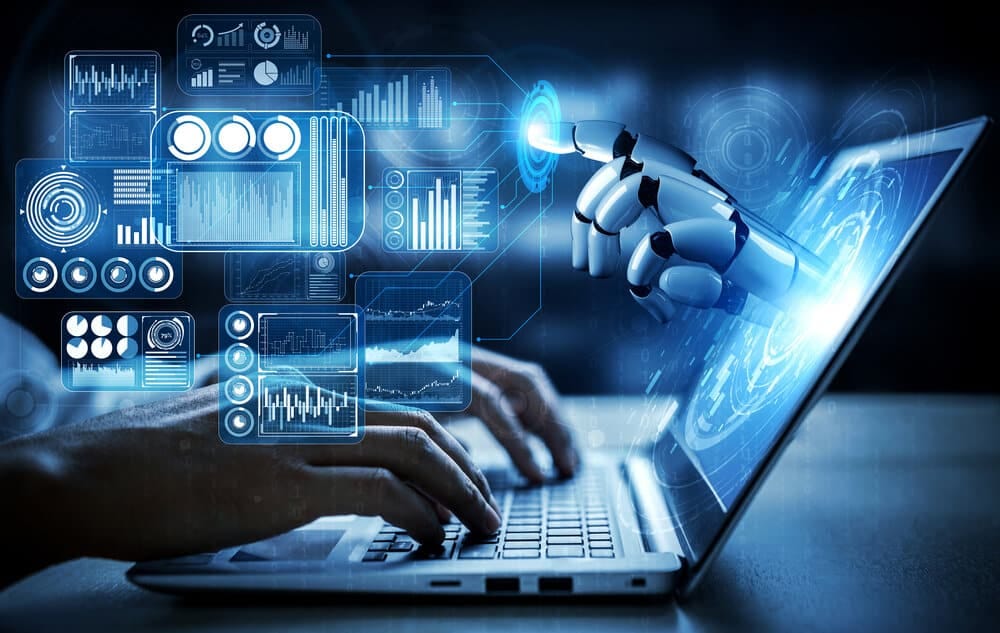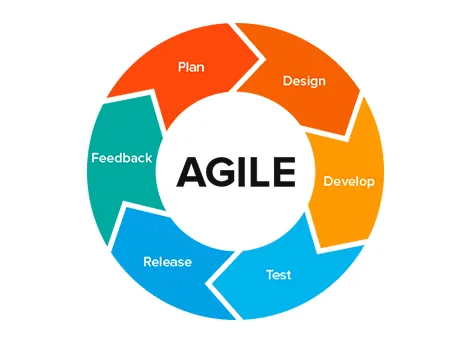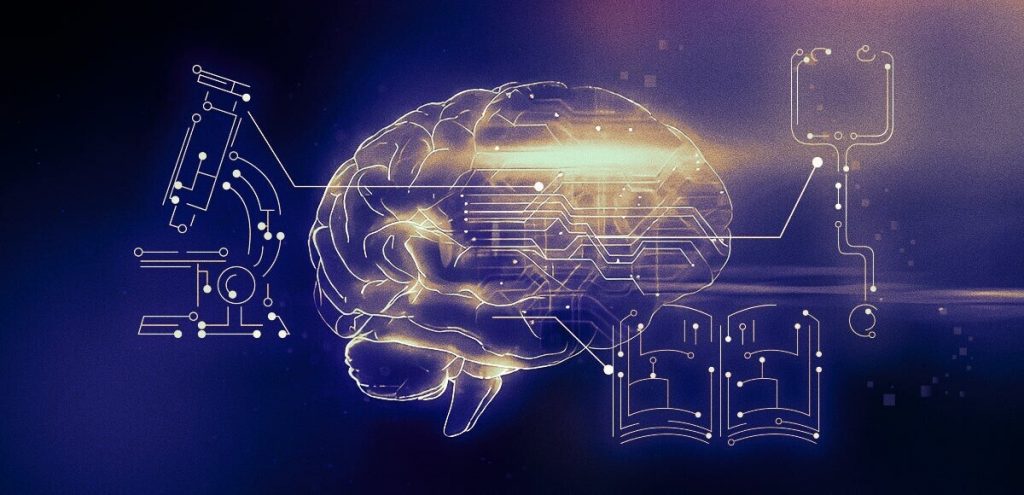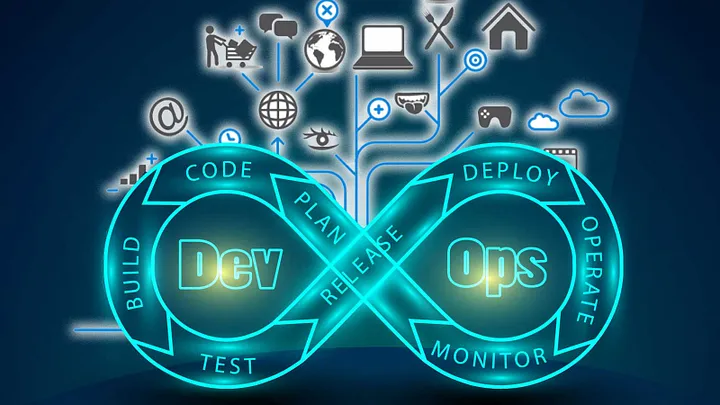At present, the role of artificial intelligence (AI) and machine learning (ML) in modern software is to a great extent misunderstood. The absence of awareness about AI and ML among the current crop of software developers cannot be more disturbing. It is believed that AI has furnished a number of tools and languages for developers to improve the development process. However, a majority of programmers receive the tools without knowing or understanding how they work. After all, if a machine takes over a task, the human intellectual capacity is freed to work on new, more. AI and ML is that very work which can relieve developers from their mundane, repetitive and time-consuming tasks. This is an attempt to explain what AI and ML really are and how they can best be put to use in software development.
Definition of Artificial Intelligence
Artificial intelligence (AI) is a scientific attempt to understand the mechanisms underlying thought and intelligent behavior and their embodiment in machines. Thinking relies on computational processes, and understanding at least in part requires an ability to model possible choices, anticipate events, and model the world. In this sense, AI addresses intelligent computational processes to understand and understand more completely. A contemporary approach treats it as a computational activity aimed at improving rationality. The intelligence is conceived as the ability to achieve goals such as decision procedures, learning, and understanding, in the face of complex environment, to would such goals. To specified, AI is the automation of activities that we associate with human thinking, such as decision making, problem solving, perception, and the simulation of intelligence in the form of intelligent software. Stimulating and augmenting human intelligence is found in the related discipline of cognitive computing, which jointly partakes in to replicate human thought process. At the time of discovery, AI has had divided fortunes in terms of the AI field. Academic work has been king to post successes whether greatly publicized or little known, has led to various popular employment finding into implementation. Of the start AI application that people have come across would be intelligence system that has built working as human expert in a specialized field. Since the mid-2010s, the high growth in AI markets and deployment of automation has created a small resurgence in academic AI.
Definition of Machine Learning
Machine learning is basically a way of achieving AI. Arthur Samuel gave a robust definition – “Field of study that gives computers the ability to learn without being explicitly programmed”. This is an old definition and the term machine learning has been in use since the 1960s. A more recent definition is this “A computer program is said to learn from experience E with respect to some class of tasks T and performance measure P, if its performance at tasks in T, as measured by P, improves with experience E.” The last part of the definition is the most important, and is the one that is less understood. For a machine to act like it has learnt, it has to improve its task performance on future tasks, after making observations on some data. This concept of improvement in future performance is also measured by P. As an example consider a software that predicts stock price movements from news articles. This is the prediction task for current and future news articles, and the accuracy of the prediction can be measured by how well the predictions match the stock price movements. If we apply machine learning to the software using historical news articles and stock price movements as E and P, the software can be said to have learnt if its future predictions match the stock price movements more accurately than previous predictions.
Importance of AI and ML in Modern Software Development
Another example is the use of AI planning software to automate complicated decision-making tasks. This kind of software may be used within the logistics industry to effectively route and schedule lorries and shipments. The planning software will represent the problem in terms of states, operators, and constraints and will use various search algorithms to find an optimal solution. This cuts down on costs when compared to employing human expertise and it also opens up the possibility for the software to improve and learn over time.
Today, it is common to see a piece of software that uses a technique known as expert systems. This is where a software system contains a complex set of rules or logic to attempt to simulate a human expert in a particular field. An example may be a piece of medical software where the patient inputs symptoms and then the software diagnoses an illness. This expert system employs an early form of AI known as knowledge-based systems. The system contains knowledge that it uses to make inferences in a specific problem domain. The knowledge is a concrete set of information that represents the system’s understanding of the problem.
There is a profound revolution in the world of software development that we are witnessing at this very moment. The trends on how applications are designed and developed have drastically shifted to following a more intelligent approach. This is attributed to the rapid growth of data and the success of applying data-driven techniques. There is now more understanding on how a software system behaves in the wild, more accountability on how to simulate human thought processes and learning, and more intelligent mechanisms to improve user experiences. Collectively, these set of skills is what we by as intelligent software and this has a profound impact on how software is built.
The Benefits of Artificial Intelligence in Modern Software
Artificial intelligence has numerous benefits for improving user experience. For example, using applications or software with artificial intelligence capabilities to manage schedules is a significant step forward. These services can organize and remember schedules, as well as handle various scenarios in case of external interference. The decision-making process of these programs is designed to be the best possible solution, as they consider all relevant factors. Another application of artificial intelligence is in gaming, where it can make games easier to win by employing methods like minimax.
Artificial intelligence is a new concept in computer science that is taking place in modern software development. As defined by John McCarthy, who is one of the pioneers of artificial intelligence, it is “the science and engineering of making intelligent machines, especially intelligent computer programs.” The idea behind creating intelligent computer programs is to automate both simple and complex tasks in human life, so that people can use these programs to perform tasks using their own hardware. McCarthy also emphasized that regardless of the program, it should help solve problems and provide solutions.
Enhanced Automation and Efficiency
The use of AI in modern software development is one that holds many appealing possibilities. Right out of the gate, AI software promises to make software development an easier, more automated process. This, in turn, will mean that AI is able to automate the tooling of software, making it easier and faster to build software at the UI level. This whole process should mean software can be built cheaper. In theory, future generations of software will build other software. A far-out idea, but one that is certainly in the AI vanguard. AI and automated software building could have a massive effect on the job market too. An article based on a report by the McKinsey Global Institute said that while automation will lead to some job displacement, AI and related technologies will also create new jobs and economic growth. A more recent article on the societal implications of AI states that more jobs will be available in programming and engineering to build AI. With software being built and maintained by other software, who knows the extent of the automation job in software development. This could mean AI is effectively making its own workforce, making software development something of an artisan’s trade of yesteryear.
Improved Decision Making
In the case of credit risk, the bank would want to make the best decision possible, and using an optimization method, an AI engine can provide a solution with the highest chance of success. This method can be applied to any situation where there are multiple variables with several potential outcomes. A different example would be easier choices of game AI, where the decision of a non-player character can be weighted against different outcomes to see which would be the most beneficial for game balancing or plot reasons.
A good example of the former is consumer credit risk decisioning. On a static rules basis, if a person has a poor credit history they will be refused a loan or given a high interest rate. In the latter mentioned predictive analysis, there are several different variables and not all of them will be relevant to the final outcome. Using data mining techniques, AI can create a model to predict the success rate of a given variable against the desired outcome and in turn make suggestions to change variables in order to achieve a desired result. This is a simpler form of what is known as decision optimization and prescriptive analytics.
In contrast to humans, AI is capable of making decisions based solely on probabilities and previous knowledge. This results in a more calculated and less random approach to decision making. The goal is to make decisions that have higher chances of success, and this is exactly what AI type applications manage to do. In taking a decision, AI weighs up all the possible choices against outcomes and chooses the best solution based on this. This capacity for decision making can be applied to many different forms of reasoning, from simple if-then statements to complex multi-variable predictive analysis.
Personalized User Experiences
A personalized user experience refers to systems adapting their behavior to meet users’ needs and preferences. This can be achieved by extracting information about the user that includes their context, needs, task, goal, and interests. It is a crucial element in modern software with the internet being overwhelmed with information. An example of a system that provides a personalized user experience is Google. When a user searches for an item on the internet, Google stores that information so when the user returns to Google at a later time, he is given targeted results, relevant advertising, and suggestions. This is all based on what Google has interpreted what the user is after. A more ICT related example of a personalized user experience is a search function for a website. The search results are always more meaningful if the search function can interpret the context of the user. This can be implemented by tracking what the user has been doing on the website and storing that in a variable. For example, if the user has been reading technology articles and then uses the search function to look for “latest mobile phones,” the search function can interpret that the user is interested in technology and produce search results with more relevance. Artificial intelligence can provide the methods and tools to make systems capable of learning about users and adapting the system behavior. This can be achieved using machine learning, decision trees, or rule-based production systems.
The Impact of Machine Learning in Modern Software
Artificial intelligence programs have a big advantage in that they can potentially have complete access to the data and the rules that they are to predict. Many predictive tasks in AI can be characterized as having a function that maps input data to an output. For example, given a medical patient, there is a right diagnosis to the patient’s condition. Or given a financial decision, there is a right choice of action. In these cases, it can be extremely fruitful to develop a predictive rule. If the rule is to be a good one, then given the data and the rule, we should be able to infer the correct output. This can be approached with supervised learning in which the rule is the aforementioned function and the output is obtained by comparing to the actual output through the loss function, or by simply using the rule as a classifier to the input data. In either case, the program can compare the predicted output to the actual output and assess the correctness of the rule. If the rule is not perfect, the program can iterate through the data and the rule to make successive refinements until it is satisfied with the predicted output. Note that no machine learning here is required in creating the function to be predicted since it would, in essence, be running a simulation of the predictive task. This method would be used with a program in attempting to predict an opponent’s move in a game simulated by the program. In the case where the data is a set of instances of the input and the output, and not a specific input, there is the possibility of learning the actual function. This can be quite sophisticated when the learning is done using methods from statistics, as is done in data mining.
Traditional programming involves an expert developing an instruction manual that describes how to accomplish a certain task. The challenge lies in that the expert must anticipate every possible scenario that could occur and the program will break if the given input is one for which the developer did not explicitly anticipate. For all but the most simple and straightforward tasks, this can make development extremely difficult. However, machine learning can provide a better way. If an expert can provide lots of data on the task in question, a learning scheme can generate a general rule that can accomplish the same task without the expert having to program specific instructions. The new program will take the rule and the task data as input and output the desired result. The rule can be ascertained through many different learning schemes. For example, supervised methods such as regression or back propagation can be used to develop a function that maps input data to the desired output. On the other hand, an expert can simply provide the algorithm for inducing the rule and the learning scheme can use inductive logic programming to generate the rule.
Predictive Analytics and Forecasting
Forecasting is a common statistical method used to estimate future aspects based on past data. It is a casual method that all people express everyday, whether it be guessing the weather tomorrow or predicting the score of a football match. It is an essential element in business decisions as it provides an assessment of expected future outcomes. Business results are comprised of several interrelated aspects. A sales forecast, for example, is a specific expectation in monetary terms. The outlook might cover a coming quarter or a whole year. Clients sometimes want the provider to commit itself to specified future sales achievements, in which case the forecast effectively becomes a target. High quality forecasts enhance the ability of the provider to set realistic goals and to manage the resources needed to meet them.
Predictive analytics and forecasting: Predictive analytics is defined as the usage of statistical algorithms and machine learning techniques to identify the likelihood of future results based on historical data. This involves various stages of complexity ranging from event classification to complex machine learning. The use of predictive analytics has been widely successful in areas such as finance and stock markets, bolstering the accuracy of forecasted results. Another example is within the retail industry, where predictive analytics is used to identify purchasing trends of different customer groups for the purpose of more effective pricing and discounting.
Natural Language Processing
One of the great features of NLP knowledge mining is that it can allow a software system to learn from the knowledge. By representing the actions that people ought to take based on the mined knowledge as a reinforcement learning problem, the software can directly learn the best actions from the text without needing a human expert to code the rules.
Many question answering systems, dialogue agents, and business intelligence software currently make use of this technology. For example, a system might automatically extract the most relevant facts from a thousand articles and present them to a user in a report. These sorts of applications are a major focus for many AI companies because the NLP processed knowledge contained in text represents a potentially huge resource that is currently difficult to access.
In a time when the flood of information and data is almost overwhelming, people need help in understanding the knowledge that is being shared. NLP technology automatically mines the knowledge available in unstructured text and can therefore add tremendous value to the decision support systems on which companies rely. With NLP, software can understand ideas and take actions that are based on a thorough understanding of the situation, not just the exact keywords.
Natural Language Processing (NLP) is a branch of artificial intelligence that helps computers understand, interpret, and manipulate human language. NLP draws from many disciplines, including computer science and computational linguistics, in its pursuit to fill the gap between human communication and computer understanding.
Anomaly Detection
Automatic anomaly detection is critical in today’s world, where the sheer volume of data makes it impossible to tag outliers manually. High-dimensional data changes over time in ways that can be very difficult to anticipate. In this setting, detecting the anomalies can be important as a means of learning how a system works or fails. Most of the available methods for anomaly detection try to construct a profile of the normal instances, then identify instances that do not conform to this profile. Heuristic-based methods look for deviating instances without assuming a specific normal profile.
Anomaly detection is the statistical process of identifying patterns in data that do not conform to another or an expected behavior. Anomalies are also referred to as outliers, novelties, noise, deviations, and exceptions. The detection of anomalous instances is important as they often indicate a problem such as bank fraud, a structural defect, medical problems, or errors in a text. Anomalies are relatively rare in comparison to the other instances within a data set, thus it is usually more difficult to detect an anomaly. Often, anomalies are the most interesting and the most important instances to detect within a data set. With the continuous increase in data collection and storage capabilities, it has become more important to be able to automatic methods of identifying anomalies.
The Future of Artificial Intelligence and Machine Learning in Software
The full potential of AI and ML in software is far from being realized today. What we witness now is just the beginning. AI is poised to fundamentally change software development. One of the most exciting ways AI is doing this is through a set of machine learning techniques called deep learning. Deep learning has recently had rapid success in a wide variety of applications including (but definitely not limited to) speech recognition and language translation software, board and card game programs, and self-driving cars. Deep learning attempts to simulate the activity in the human brain (specifically in the neocortex). At the moment it has numerous diverse methods, but one of the most successful is artificial neural networks. A neural network is an interconnected assembly of simple processing nodes, i.e. an artificial brain. It makes the machine learn from observational data (i.e. x) to create an accurate decision boundary to label the data, and predict outcomes for never before seen data. This is great when the complexity of the data makes modeling the probability distribution infeasible, and it has an advantage over traditional statistical methods such as regression analysis and clustering. This is the reason it has been used to improve so many already existing applications. But the basic theory and functioning is quite different from traditional statistics, so it presents a shift in the perception of the role of AI in software, as the developers begin to become more acquainted with basic data analysis techniques. An example of such a neural network is one that is trained to play video games. It can first “watch” a human player to understand the basic principles and tricks to playing the game, then the AI’s program can try to accomplish a certain in-game task. The simulation of data and pattern recognition is highly generalized and can easily be applied to a myriad of things.
Advancements in Deep Learning
While the methods used are largely a modified version of previous shallow learning techniques, the work marks an important area to focus deep learning research. By providing formalizations of the statistical procedures being used in a variety of deep learning applications, it should become clearer where and why deep learning algorithms are superior to previous methods. This, in turn, will allow for the development of more effective new techniques.
The work from Shu et al. presents an interesting approach to a deep learning problem, focusing on the construction of an algorithm capable of using a long time series of news wire documents to predict market trends. The significance of this work is that it marks an attempt to formalize deep learning techniques that, from a statistical perspective, have been known to be effective, yet still lacking clear theoretical foundations. The method assumes a generative model for the news wire documents and employs an ensemble of trees to predict the market response using a loss function that draws similarities to conditional probability.
Deep learning has become a hot topic in the world of artificial intelligence with the recent success of deep neural networks in various applications. One area where deep learning methods failed to achieve a significant improvement on shallow learning algorithms, such as SVM, is in time series prediction.
Ethical Considerations and Responsible AI
Aside from deciding what data and what sort of learning is acceptable, I actually have the challenge of making AI agents act during a way that’s aligned with what we are trying to realize. As AI becomes more autonomous, it’ll be making decisions that affect the lives of individuals. We might want to make sure that these decisions are good ones, but it’s quite hard to inform an AI the way to reach its goal in a way that’s not dangerous. As an easy example, consider an AI tasked with reducing the speed of production defects during a factory. If it were to simply shut the assembly line down entirely, then the speed of defects would technically become zero.
However, AI and ML technologies come with their own set of ethical complications. Algorithms learn from data. When that data reflects human prejudices and biases, the algorithm may well learn those biases. This presents an important challenge if we want AI and ML technologies to treat everyone fairly. Take, as an example, future AI decide whether or not to grant a loan to some person. If it learns from data a neighborhood avoidance low-income families has a better repayment rate, it’d then tend to deny loans to people from those neighborhoods. This is able to unfairly discriminate against the people from the low-income area, as they’re being denied a chance supported data from people before them. We are able to not simply remove data because it’s biased, as often the simplest data to assist a decision may be something that is undesirable to replicate in an ideal society (consider a diagnosing tool learning from data on what symptoms are least likely to a particular illness, it might be best at diagnosing the illness albeit these symptoms aren’t what we might want to look for in an actual patient).
Integration with Internet of Things (IoT)
As mentioned before, IoT is fast emerging as an arrangement of profoundly interconnected information-driven administrations. IoT will give a worldwide system foundation by associating things which will include equipment, implanted programming, interchanges frameworks, the web, and cloud-based administrations. It will spread from brilliant homes where shrewd indoor regulators will be learning inclinations and directing temperature control, to keen urban areas with shrewd activity administration frameworks. AI and Machine Learning techniques will be tremendously helpful in the field of IoT. AI is required apparatus for an investigation of substantial volumes of information gathered by IoT gadgets from the sensors. Machine learning, being the subset of AI, is a strategy used to plan to implement frameworks that can gain from information. The utilization of Machine learning has been developing infectiously and its applications extend from computerized reasoning, anticipating investigation, measurable information mining, and numerous others. An effective use of these strategies to IoT information will result in mechanization in information examination and propel choice emotionally supportive networks. This mechanization will moderate the human weight from colossal information and lessen mistake rates. Speaking for instance, utilizing Machine learning calculations, we can make sense of examples in information from shrewd home sensors and anticipate if the indoor regulators should be modified for vitality preservation at specific timings of the day. This kind of expectation can encourage customize rules for the home vitality administration framework. The other discriminating element of AI and Machine learning system is to create able methodology frameworks that can carry on as indicated by the situations. This will prompt improvement of IoT shrewd frameworks with virtual operators that can settle on productive choices and give customized administrations, for example, a keen movement framework with administration connectors that can organize an ideal movement bearing taking into account constant activity data and singular client inclinations. This best-in-class advancement requires prescient models and improvement of arrangement frameworks which are the abilities of AI and Machine learning techniques.
Potential Challenges and Limitations
To date, machine learning has helped artificial intelligence in reaching its goals. Currently, machine learning has been transformed from a learning artificial intelligence and pattern recognition. It has increased the speed of learning artificial intelligent systems and provided tons of data from which an AI can learn and make decisions. The great amount of data can be a good resource for an AI to learn. It can be in any type, like photos (medical imaging), text data (typing), or it can be in the form of data mining from databases (financial or healthcare data). This data can help an AI to learn quickly and make accurate results. By using a great amount of data, an AI can avoid assumptions as decisions are based on the available data and do not rely on assumptions. In the future, we are going to see a systematic shift in AI and machine learning where machine learning will be more focused on deep learning. Deep learning will enable machines to make decisions based on data and ensure that assumptions are not made.
The machine learning program may encounter an environment where it is impractical for the learning algorithm to conduct experiments to find out whether a given action is the correct one. It must then derive knowledge from the data that is currently available to be used in making a decision on a set of actions. Using the provided data, the learning algorithm, which in the case of AI is a part of the intelligent agent, will construct a model that maps input data to a set of actions. This is in contrast to other algorithms in the sense that the model and the data are both vectors in some abstract space, and the validity of the model can often only be determined by the human judgment on the result of the actions—analogous to some real-world system.
Throughout the essay, there has been a concentrated effort to describe AI and to demonstrate what AI means, especially exciting work in machine learning. Neural networks, as they were in the 1960s when the field of AI was founded, seemed to resemble the working of the human brain to some extent, such that a complex network of “neurons” work together to solve a problem that may have an undefined solution. Instead of trying to locate mathematical equations to solve a particular problem, there is an attempt to have the neural network learn a task or concept. Despite our best efforts, this primary goal of machine learning is rather elusive. It should be noted that in the other sciences, one often has the luxury of defining the object of study (e.g., mathematicians can define a particular problem, biologists can define a learning algorithm or what constitutes a successful evolution of the algorithm and can systematically test the algorithm on paper simulations). The ability to learn a task or concept is elusive because the learning algorithm often encounters complex environments, and because the time scale for it to adapt may be too long.










